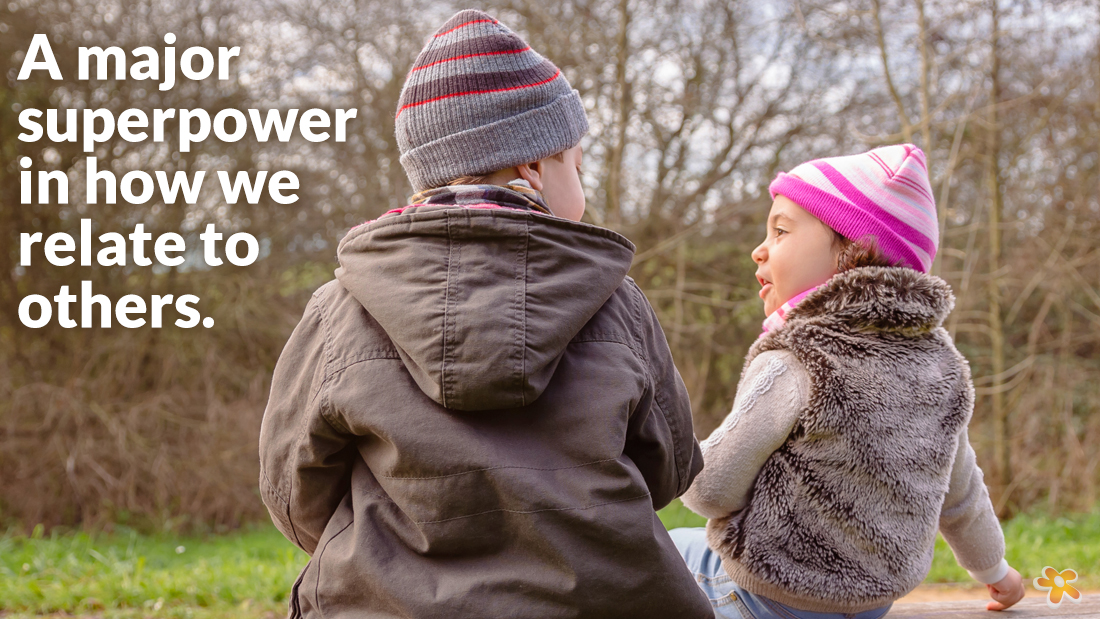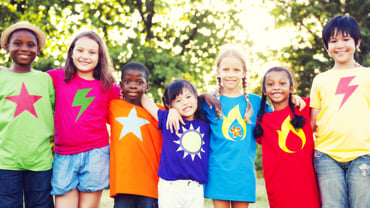Social Communication
Social Communication is something almost everyone does. In essence it’s how we think, respond, and behave to the people around us – and even to ourselves. That may sound like a strange definition, but it’s true.
It’s one of the skills we possess that can be a major superpower in how we relate to others and how they in turn relate to us.
Most of the time this skill develops without us really putting much effort into it. Our brains are wired for social interaction from very early, as we make eye contact with our caregivers and begin to engage in turn-taking through eye-gaze and facial expression. It usually moves into vocal play where the parent imitates the sounds the baby makes and then the baby reciprocates.
Over time these skill develop and refine into conversational skills, the ability to read others’ body language, the skill to predict others’ behavior, and the knowledge to modify our own behavior to meet the needs of environment around us or our own wants.
Let me give a few examples.
We use our social communication skills (or sometimes called social thinking – a phrase coined by Michelle Garcia Winner), when we walk into a room full of people for an unfamiliar event. We ‘read the room’ to learn the rules of the room. If people are sitting and staring at one person speaking, we know that, if we enter, we should sit and listen to a speaker too. If we see someone crying, then we use our social communication skills to realize that the person may be sad and we might want to make our communication fit the person’s emotions.
Even when we’re alone we use social communication. When we’re watching a movie or reading a book, we use social communication skills to predict what’s going to happen, to determine who the ‘good guys’ are, and to make guesses about how the characters might be feeling.
We even use social communication skills to talk to ourselves.
It’s an extremely complex process involving a lot of different language and cognitive skills like:
- Problem-Solving
- Seeing the Big Picture
- Predicting
- Part-to-Whole Understanding
Fast Processing of visual, auditory, and verbal information (to respond to verbal and nonverbal information in a timely and accurate manner)
Comprehension of language (Understanding the words spoken to us)
Semantics (understanding the meaning behind how the words are used when spoken to us)
‘Mind-reading” based on what we see (body language) and hear (tone of voice)
Most of the time all these things happen without us thinking about them. We just ‘read’ what we see and make appropriate responses without much thought. We know when and how to respond in a conversation. We understand how to use eye contact, facial expression, and body language appropriately in the right context with the right people. We can predict which people are going to be ‘good’ people to be around and which ones we should avoid.
All of these skills and so much more are needed to make social communication work.
So just imagine how hard it must be if your brain doesn’t process this information easily? If you don’t know what facial expressions mean or you can’t know the ‘rules’ by looking at others in the room?
Remember, one of the great things about social communication is it can be learned throughout your entire life.
Individuals who may have challenges with social communication are those who may be diagnosed with Autism, ADHD, Fetal Alcohol Syndrome, and Learning Disabilities. Speech-Language Pathologists and Occupational Therapists are trained to help teach these lifelong skills so if you know of someone who may need support with social communication, please contact a professional near you.
Social Communication – Engaging Your World
Pepper Basham, MS, CCC-SLP
Want to know how a Therapist can Help?
Call (828) 398 0043 or click on the schedule button.



